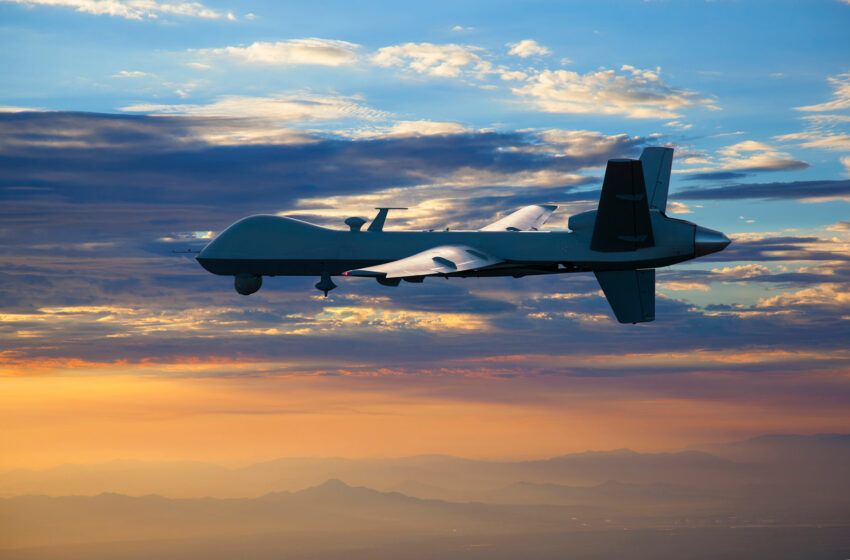Predator Drones for India: A Strategic Leap in Defense Capabilities
 |
| Predator Drones for India: A Strategic Leap in Defense Capabilities |
On October 15, 2023, a major milestone in India's defense acquisition was reached when the Indian government signed a $3.3 billion deal with the United States for the procurement of 31 MQ-9B Predator drones. The contract, finalized after approval from the Cabinet Committee on Security (CCS), marks a significant enhancement in India's unmanned aerial capabilities, enabling more advanced surveillance and precision strike operations across various branches of the military.
A Boost to Naval and Aerial Surveillance
Out of the 31 MQ-9B drones, 15 will be allocated to the Indian Navy. These unmanned aerial vehicles (UAVs), armed with Hellfire missiles and GBU-39B precision-guided bombs, will bolster the Navy's ability to carry out a wide range of maritime operations, including surveillance, anti-submarine warfare, and over-the-horizon targeting. The advanced payload and endurance of these drones will help extend the Navy’s operational reach, crucial for monitoring the Indian Ocean region, where China has been increasing its naval footprint.
Eight drones each will be assigned to the Indian Army and the Indian Air Force. The MQ-9B drones are designed for multi-role capabilities and will provide critical support in areas such as intelligence, surveillance, reconnaissance (ISR), and precision strikes, adding a new layer of strategic depth to India’s defense infrastructure.
The MQ-9B: A Game-Changing 'Hunter-Killer' Drone
The MQ-9B Predator, a variant of the widely-used MQ-9 Reaper drone, is known for its "hunter-killer" capabilities. Designed by General Atomics, this drone is part of the US foreign military sales program. Its flexibility allows it to perform a wide array of roles, from maritime surveillance to precision strikes, making it an asset across multiple domains.
The deal will not only provide the Indian military with advanced UAV technology but also bring maintenance, repair, and operations (MRO) facilities to India, fostering indigenous capabilities. Indian defense planners believe these drones will enhance the military's ability to conduct remote-controlled operations and surgical strikes, especially in sensitive areas such as Pakistan-occupied Kashmir and the Himalayan borders with China.
Expanding Indo-French Defense Cooperation: Rafale Marine Jets
In parallel with the MQ-9B drone deal, India is expanding its defense partnership with France. During his visit to France, National Security Advisor Ajit Doval met with French officials to discuss several defense-related issues. A key point of discussion was the procurement of 26 Rafale Marine fighter jets, to be deployed on the INS Vikrant, India’s indigenously-built aircraft carrier.
Dassault Aviation, the manufacturer of the Rafale-M jets, has reportedly lowered the price of the deal, which is expected to be worth over ₹50,000 crores. The addition of these jets will significantly enhance the Indian Navy's carrier-based airpower, offering superior air-to-air and air-to-ground combat capabilities.
Enhancing Missile Testing Infrastructure
India is also ramping up its missile development program. The CCS has approved the construction of a new missile testing range in Nagayalanka, Andhra Pradesh. This facility will be used for testing various tactical missile systems, including surface-to-air and anti-tank missiles developed by India’s Defence Research and Development Organisation (DRDO). This new infrastructure will support India’s efforts to strengthen its missile capabilities, especially as it seeks to develop more advanced systems for national defense.
Strengthening Underwater Combat: Indigenous Nuclear Submarines
To counter the growing presence of the Chinese Navy in the Indian Ocean region, India has moved forward with plans to develop its own nuclear-powered attack submarines (SSNs). The Indian government has given the green light to construct two 6,000-ton submarines at the Ship Building Centre in Visakhapatnam. These submarines, with a focus on indigenization, are expected to be more than 90% locally produced, enhancing India’s self-reliance in defense production.
Revitalizing Ground Forces: Overhauling the T-90 Bhishma Tank
In line with India’s ‘Atmanirbhar Bharat’ initiative, the Indian Army has also made strides in modernizing its ground forces. The T-90 Bhishma, a key battle tank in the Indian Army’s arsenal since 2003, has been successfully overhauled. This process, carried out by the Corps of Electronics and Mechanical Engineers (EME), involved disassembling and rebuilding over 200 components, restoring the tank’s firepower, mobility, and protection. The overhauling of the T-90 demonstrates India’s growing technical expertise and its focus on maintaining cutting-edge military readiness.
Conclusion
The recent defense acquisitions and upgrades reflect India’s broader strategic goals of strengthening its military capabilities in a rapidly evolving security environment. The addition of MQ-9B Predator drones, Rafale Marine jets, advanced missile systems, nuclear submarines, and overhauled T-90 tanks all contribute to enhancing India’s ability to respond to regional and global threats. As India continues to prioritize defense modernization and self-reliance, these developments signal a robust and forward-looking military posture aimed at safeguarding the nation's interests.



Post A Comment
No comments :